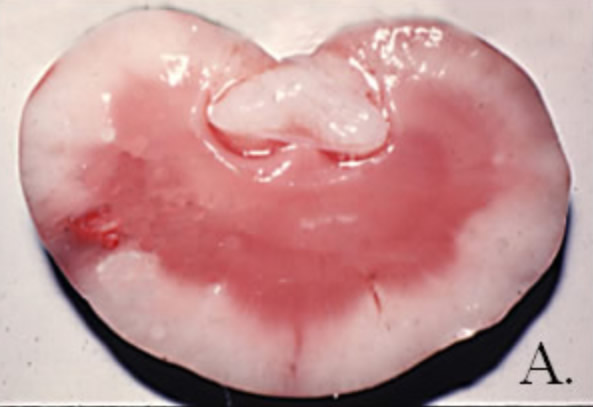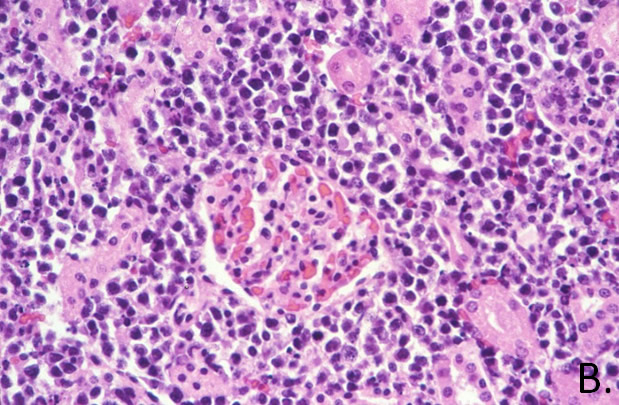Etiology: The etiology of lymphosarcoma in rabbits is largely unknown but is likely multifactorial [2]. Susceptibility to the disease is believed to be due to an autosomal recessive gene expressed in the homozygous state.
Incidence: Lymphosarcoma is the second most common neoplasm in rabbits. It is considered a tumor of juvenile and young adult rabbits.
Clinical Signs: Clinical signs are non-specific and include anorexia, lethargy, diarrhea, rhinitis, and emaciation, depending on organ involvement [2].
Pathology: A tetrad of necropsy lesions considered pathognomonic for lymphosarcoma in the domestic rabbit are:
1) enlarged, tan kidneys with an irregular surface (A.)
2) hepatomegaly with a diffuse pattern of small pale foci throughout the parenchyma
3) splenomegaly
4) lymphadenopathy in which all of the lymph nodes in the body may be involved in the neoplastic process
Histologically, lymphoblastic cells invade and obliterate organ structure (B.).
Diagnosis: Diagnosis is confirmed with histopathology.


2. Quesenberry, K.E., Carpenter, James W., Ferrets, Rabbits, And Rodents Clinical Medicine And Surgery2003, 11830 Westline Industrial Drive, St. Louis, Missouri 63146: Saunders.